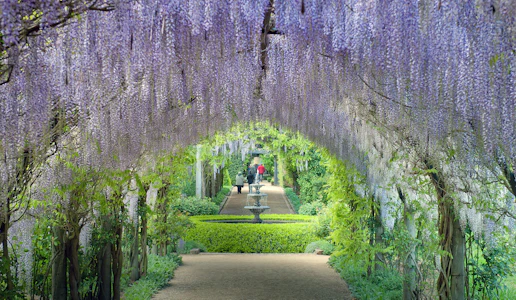
A Sanctuary for All at The Burrow at Wombat Bend
Known for its towering forests, lush vineyards, vibrant gardens and natural attractions, the Yarra Valley and Dandenong Ranges have always been the ‘lungs’ of Melbourne.
As such, sustainability is always in season here and across the region, businesses are implementing environmental and socially responsible initiatives at the forefront of their core business, ensuring our region stays clean and green for generations to come.
Set beside a shady billabong in Dixon’s Creek, The Burrow at Wombat Bend offers a quiet and beautiful self-contained sanctuary amid a leafy Australian landscape. It’s a retreat where guests cosy in for a relaxing escape, enjoy generous breakfast provisions and even a local chef-made dinner (on request).
Guests love the quiet, but also the convenience of being only a five-minute drive to some of the region’s best wineries, cellar doors, shopping, artist's galleries, gardens and so much more.
The property is also a quiet paradise for the resident wildlife, making it a favourite for nature lovers or any traveller keen to spot native birds and wildlife in their natural setting.
Owners Sue Forrester and Bill Molyneux purchased the 5 acres of tree-less over-grazed dirt in 1978 to create a natural sanctuary for wildlife and a home for themselves. They joined Land for Wildlife and reforested the property with over 1,000 trees and shrubbery, creating habitat for wildlife and making a significant contribution to native biodiversity conservation.
"Our goal was always focussed on establishing a sanctuary for wildlife and humans," says co-owner Sue Forrester.
"Finding five acres of degraded treeless paddock was a gift, as it meant we could regenerate this land from scratch and allow our passion full reign. Forty-something years on, Wombat Bend’s heartbeat is stronger than ever .... and our job is to nurture and tend its soul into the future."
Creating the wildlife habitat has several benefits over and above creating a thriving wildlife sanctuary - by adapting the land to incorporate a 2 1/2 acre wetland (billabong), the property has enabled water retention and flow management, soil improvement through allowing organic matter to accumulate and decompose, moisture retention in the shade, reducing evaporation, and cooling of temperatures through transpiration of foliage.
When you stay at Wombat Bend, you may notice a notable difference in ambient temperature around the ground compared with that of the open paddocks that surround it. Their tanks gather rainwater (their sole water supply) and tend a hearty vegetable garden (pictured below) for guests to help themselves from - all of which adds to self-sufficiency and low food miles.
Fancy birdspotting or just enjoying the thought of waking to birdsong each morning?
From a bird count of zero, Wombat Bend is now home to over 115 species of birds, most residents and some as seasonal visitors. Occasionally a rarity appears, such as the Scarlet Honeyeater that arrived in late spring. Creating a habitat diversity has enabled a richness of species to occupy niches, from beneath the surface of the water to the highest tops of the eucalypts.
In the 2022 Official Bird Count by BirdLife Australia, Sue recorded 320 bird calls in 20 minutes!
Eleven species of frogs, turtles and fish thrive in the wetlands, while waders and waterfowl are permanent residents of the billabong, feeding and nesting in safety. Ground-loving and woodland bird species occupy low- and mid- to top-level tree canopy niches.
Here you'll also find several micro-bat species, together with phascogales (also known as wambengers or mousesacks), ringtail and brush-tailed Possums, and bare-nosed wombats are residents, all taking advantage of the wildlife corridor that Wombat Bend provides. The property also links further to a habitat at Pauls Creek, which forms a boundary to the property.
They have a resident wombat named Jennifer (pictured below) who is currently nursing a joey and it's not uncommon to spot possums, wombats, echidna and swamp wallabies during a woodland walk.
They are among the early adopters of solar, installing 24 panels on the roof of their guest accommodation The Burrow at Wombat Bend, as far back as 2008 (pictured below).
As horticulturists, they planted selected native species throughout the property including eucalypts, acacias and a range of banksias, many of which they cultivated. Callistemons
provide a fabulous array of style and colour together with extreme resilience in all gardens, ideal for screening as well as bird habitat. Likewise, native plants such as rushes and reeds planted along the billabong help provide a specialised habitat for nesting and feeding many waterbirds.
"Sustainability is and always has been at the heart of every decision we make," Sue adds. "Whether it’s choosing cleaning products or the food we choose to buy, to the way we work with the land and nurture wildlife who have chosen to call Wombat Bend home."
Guests can enjoy a relaxing stay, enjoy all the benefits of the great location and know that they're assisting in looking after the natural surroundings that make it so special.










































